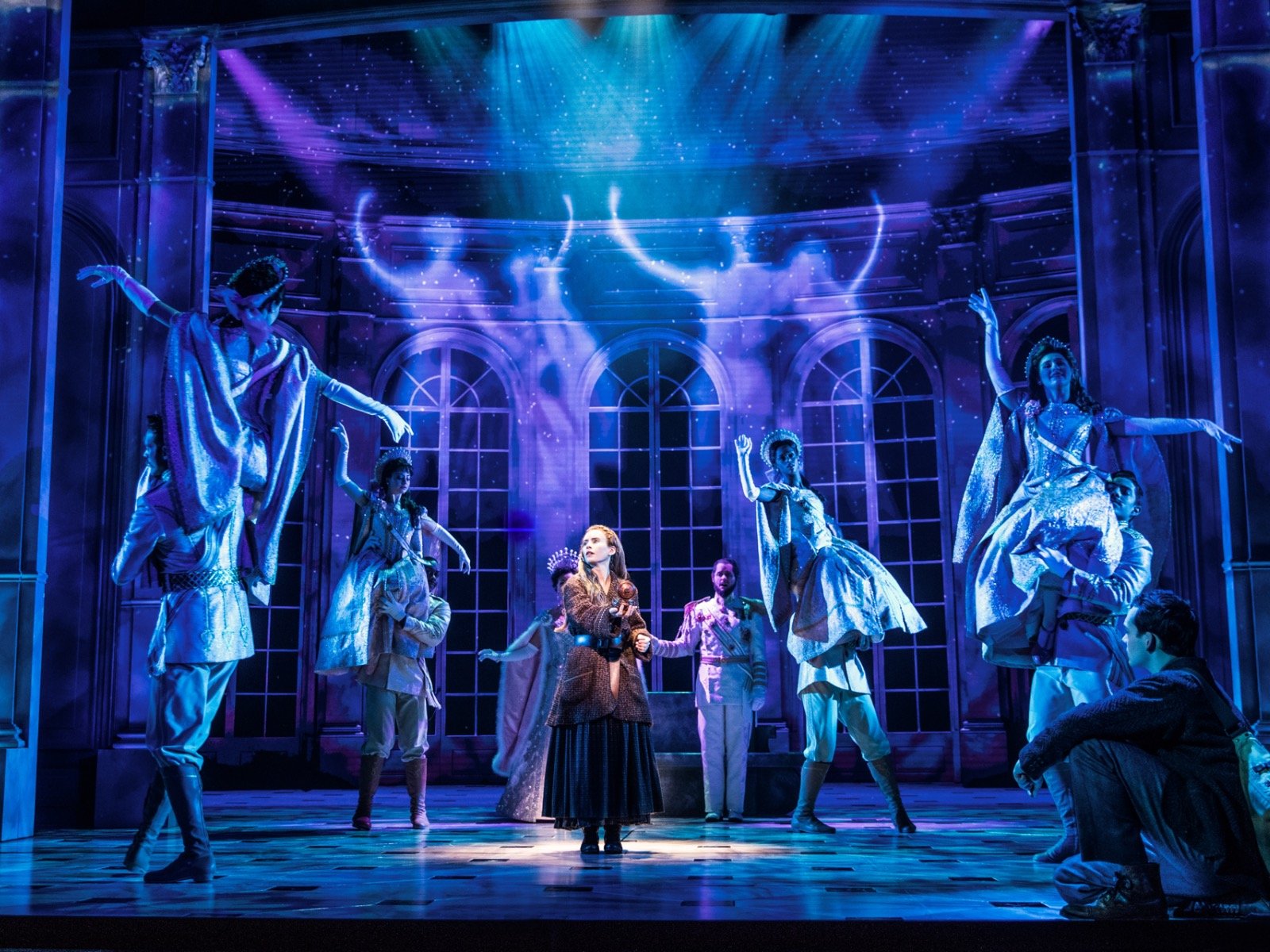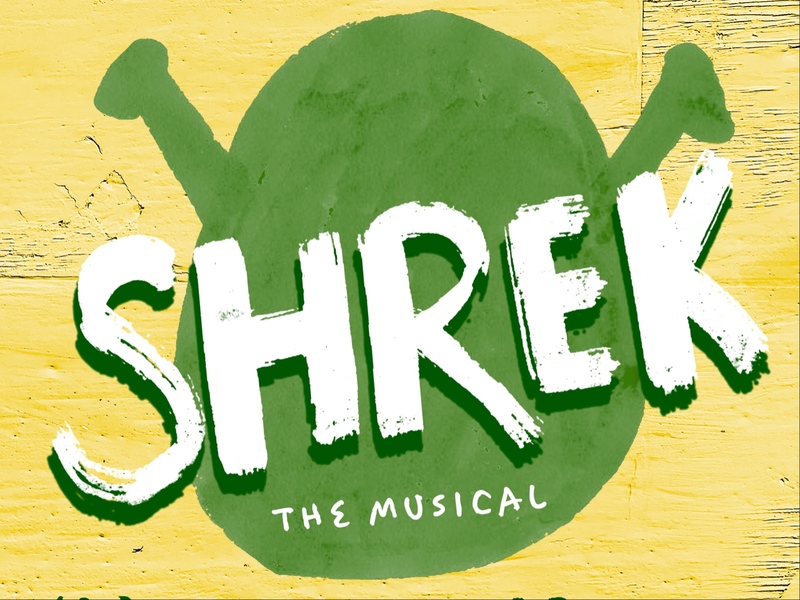According to historians, members of Russia’s last royal family, the Romanovs, were executed by their Bolshevik captors in 1918 as revolution gripped the country. But beginning in 1920, more than 20 different women came forward claiming to be the Grand Duchess Anastasia, who had miraculously escaped the fate of the rest of her family.
Although the theories of a surviving Romanov were officially debunked with DNA testing in the 1990s, the Anastasia fantasy lives on. It was the subject of a musical animated film by Don Bluth ("An American Tail," "The Land Before Time"), with a score by Stephen Flaherty and lyrics by Lynn Ahrens ("Ragtime," "Once on this Island"). And, like many popular cartoons, "Anastasia" was retooled for the stage with 16 new musical numbers added by the original composition team. It ran for two years on Broadway.
Now Milwaukee audiences can see the "what if" story of a missing princess, a heartbroken grandmother, an amnesiac orphan, two charming con men and a ruthless Soviet officer, set against the backdrop of the last days of the Russian Empire and the roaring 1920s in Paris.
The touring production of "Anastasia" opened an eight-show run at the Marcus Center on Tuesday to an appreciative crowd. This pleasant musical, performed by an uneven cast, feels like it’s trying very hard to fit the mold of the Disney princess productions that have enjoyed long runs on Broadway – and in every other possible medium. But with plot points that feel like a collage of other fairytales and musical scripts, overwhelming visuals and an ambivalence about its tone, the musical "Anastasia" echoes history: a lot of people wanting to believe in something extraordinary that turns out to be a disappointment.
The musical begins with a dramatic flashback to the end of the Romanov family’s reign, marked with stunning white, gold and glittering traditional costumes, crowns studded with sparkling jewels, and gala balls that look like a snow globe fantasy come to life. (Linda Cho's stunning costume design covers many countries, time periods and social classes.) There we meet Little Anastasia (a perky Delilah Rose Pellow in the performance I attended) and the Dowager Empress (Joy Franz, whose characterization unfortunately veered to melodrama and whose voice was not up to the task of delivering her solos).
Quickly that idyllic scene is smashed by the Bolsheviks, and the next several songs establish the misery of the Russian people. Under a new government where the citizens are starving, it’s easy to embrace a rogue pair of con men who decide to end their impoverished plight by inventing an Anastasia look-alike and collecting the large reward that the Dowager Empress is offering from her place of exile in Paris.
As the jovial old hand in swindles and impersonation, Vlad (Edward Staudenmayer) is a charming, older version of the Artful Dodger. With a mischievous glint in his eye and the swagger of a confident rascal, Staudenmayer brings a warm heart, a flair for physical comedy and a gorgeous voice to the role of schemer-in-chief. His young co-conspirator Dmitry (played on opening night by Matt Roswell) is learning the ropes, but more importantly, he’s set up to be the idealistic love interest for the title character. Squeaky clean in both look and outlook, Roswell would be more convincing as a Mouseketeer than a desperate street ruffian. His standard-issue musical theater voice and smile make him a great performer but don’t lend any credibility to his character – he doesn’t communicate even the faintest interest in Anya (Lila Coogan), let alone chemistry.
As the villain/thwarted love interest/Soviet operative with daddy-issues, Jason Michael Evans is strangled by his poorly conceived character, Gleb. Reaching impressive notes vocally, Evans is stuck in a very one-note role: a junior operative with a Javert-like determination to kill the last Romanov. His inner conflict veers into ridiculousness when he finally finds Anya after she’s been turned into the fabled princess. Everyone knows you can’t shoot the girl who finally gets to wear the crown and prom dress at the end of the show.
For her part as the street sweeper-turned-candidate for princess, Lila Coogan and her bright, straightforward soprano give their all to provide the audience with the heroine they’re longing for. Her Anya begins as a ringer for Cosette/Cinderella with her big dreams of a better life, shabby clothes, dusty broom and long golden hair tumbling from under a drab scarf.
Then under Vlad and Dmitry’s tutelage she morphs into Eliza Doolittle, working to memorize her lessons on becoming a royal lady – walking, dancing, speaking and listing off convincing details about her former life in the palace. Coogan is good at conveying Anya’s pluck – the moxy of a modern, self-rescuing Disney character, fending off bad guys with a hot poker and a ferocious yell. Appropriately melancholic as she sings the "Anatevka"-esque "Stay I Pray You," she triumphs in Paris, donning a rich garnet ballgown to rival holiday Barbie. But the script lets her character down with an unsupported, anticlimactic ending.
In addition to problems with the basic story, the musical’s structure doesn’t help engage audiences. Overpacked with confessional songs that explain what each character is feeling, the show never develops any momentum. And then there’s the aggressively jarring look and feel of the production.
Aaron Rhyne won a Drama Desk and an Outer Critics Circle award for outstanding projection design on "Anastasia" in 2017, but two years later, the often overpowering videos that dominate the stage feel disjointed and dated. Some backdrops look like realistic picture postcards of famous Russian and French landmarks; others, like the interior of government offices, are surrealistic to emphasize the huge bureaucracy. A train ride through the countryside resembles amateurish computer animation in a video game.
In yet another visual style, the blood red flood of color with soldiers’ silhouettes that indicates the arrival of the Bolshevik army looks like a cartoonish propaganda poster. And scenes where the characters’ journey is marked through the movements on a maps is literally dizzying. Not only do the graphics obscure the actors, who look like tiny blips on an enormous screen, they are extremely hard to look at. The horror movie/Haunted Mansion spooky effects of the Romanov ghosts swirling about is also difficult to square with the rest of the production.
The field of stage projections and video has made great strides in the last few years and undoubtedly helps traveling companies keep costs down by having so many virtual set changes, but "Anastasia’s" hodge-podge of graphics is much more distracting than transporting for audiences.







